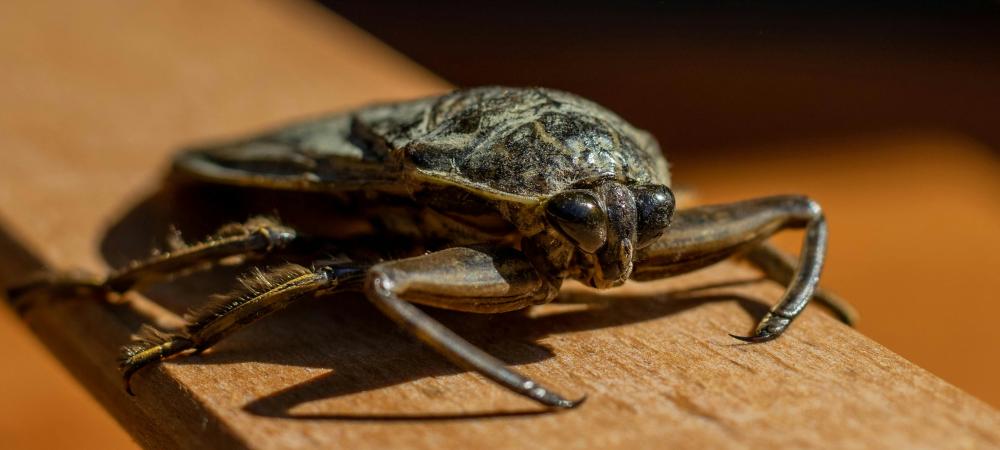Water Bug vs. Roach: What's The Difference?

You're walking into your kitchen late at night when you see it—a dark, scurrying insect zipping across the floor. Your first instinct? "It's a cockroach!" But what if it isn't? The confusion between water bugs and cockroaches is common, but understanding their differences is key to dealing with them effectively
Many people mistakenly call large, dark-colored roaches "water bugs," but true water bugs are a completely different species. Knowing the difference isn’t just about curiosity—it could mean the difference between an easy fix and a full-blown infestation.
What Are Water Bugs?
True water bugs belong to the order Hemiptera and are semi-aquatic predators. Unlike cockroaches, they prefer freshwater environments and are rarely found inside homes. If you see a bug in your sink or bathtub, it’s more likely a roach than a true water bug.
What Do Water Bugs Look Like?
- Size: Larger than cockroaches, often reaching up to 2 inches.
- Color: Brown or grayish.
- Antennae: None, unlike cockroaches.
- Body Shape: Oval and slightly flattened.
- Legs: Clawed front legs designed for catching prey.
- Wings: Form an X-shape when at rest.
- Behavior: Predatory, capable of biting if threatened.
If your so-called "water bug" is running around your kitchen, it’s likely a cockroach—not a water bug at all.
What Do Cockroaches Look Like?
Cockroaches are terrestrial insects belonging to the order Blattodea. They are scavengers that infest homes and spread bacteria. Unlike water bugs, cockroaches actively seek out human dwellings.
- Size: ½ to 1½ inches long.
- Color: Reddish-brown to dark brown.
- Antennae: Long and constantly moving.
- Body Shape: More elongated and slightly tapered.
- Legs: Spiny and built for fast movement.
- Wings: Some species can fly, while others have small or non-functional wings.
- Behavior: Nocturnal scavengers that feed on organic matter, including food scraps.
- Habitat: Found in kitchens, bathrooms, basements, and warm, damp areas of a home.
Key Difference?
Unlike water bugs, cockroaches don’t bite, but they spread diseases and multiply rapidly, making them a serious household pest.
Why Cockroaches Are Mistaken for Water Bugs
Cockroaches and water bugs share similar colors, body shapes, and habitats, leading to frequent confusion. Here’s why they are commonly mistaken for each other:
- Misleading Names: Many people refer to large cockroach species (like the American cockroach) as "water bugs," even though they are not aquatic.
- Damp Environments: Cockroaches thrive in moisture-rich areas like basements and bathrooms, which reinforces the belief that they are water-dwelling insects.
- Size Similarities: Some larger cockroach species resemble water bugs in size, making identification difficult without close inspection.
- Fast Movements: Both insects scurry quickly when disturbed, making it hard to get a detailed look before they disappear.
What Attracts Water Bugs and Cockroaches to Homes?
While true water bugs rarely enter homes, cockroaches are common household pests. Here’s what draws each insect inside:
What Attracts Water Bugs?
- Outdoor Lighting: Many species are attracted to artificial lights at night.
- Standing Water: They may wander into homes with excessive moisture or water leaks.
- Aquatic Features: Swimming pools, ponds, and fountains can lure water bugs close to buildings.
What Attracts Cockroaches?
- Food Sources: Crumbs, grease, pet food, and garbage are all magnets for roaches.
- Moisture and Humidity: Leaky pipes, standing water, and damp environments provide ideal conditions for survival.
- Warmth and Shelter: Roaches hide in cracks, behind appliances, and within cluttered spaces where they feel safe.
Where Do Water Bugs Come From?
True water bugs are not likely to wander into your home unless they are accidentally brought in. They thrive in various freshwater environments, including:
- Ponds and Lakes: A primary home for species like water boatmen and backswimmers.
- Streams and Rivers: Some species, like giant water bugs, prefer flowing water.
- Marshes and Wetlands: Ideal for a variety of aquatic insects.
- Swimming Pools and Fountains: Water bugs are sometimes found in artificial water bodies if drawn by lights or food sources.
- Floodplains and Seasonal Ponds: Some water bugs lay eggs in temporary water bodies and adapt to changing water levels.
If you’re seeing “water bugs” in your home, they’re most likely American cockroaches, which thrive in damp environments like sewers and drains.
How to Get Rid of Water Bugs (Or What You Think Are Water Bugs)
If you’re dealing with water bugs vs. cockroaches, the removal strategy differs. True water bugs rarely invade homes, but if they do, they can be removed easily. Cockroaches, on the other hand, require a much more aggressive approach.
Getting Rid of True Water Bugs:
- Eliminate Standing Water: Remove excess moisture around your home.
- Fix Leaks: Water bugs are drawn to wet areas, so repair any plumbing issues.
- Seal Entry Points: Close gaps around doors, windows, and drains.
- Reduce Outdoor Lighting: Water bugs are attracted to light sources at night.
Getting Rid of Cockroaches:
- Keep Your Kitchen Clean: Wipe down counters, vacuum crumbs, and remove garbage frequently.
- Store Food Properly: Use sealed containers to prevent access to food.
- Fix Leaks & Dry Out Damp Areas: Roaches thrive in humidity—dehumidifiers can help.
- Use Roach Baits & Traps: Gel baits, sticky traps, and boric acid can significantly reduce their numbers.
- Call a Professional: If the infestation is severe, professional pest control is the best option.
Local Assistance
Water bugs and cockroaches might look similar at first glance, but their differences are crucial. If you spot a fast-moving bug inside your home, it’s almost certainly a cockroach, not a true water bug. While water bugs live outdoors in freshwater, cockroaches invade homes, spread germs, and reproduce at alarming rates.
If you want to reclaim your home from unwanted pests, contact the exterminators here at Alford Pest Control. Our team crafts tailored solutions to whatever pest infestation you may be experiencing!